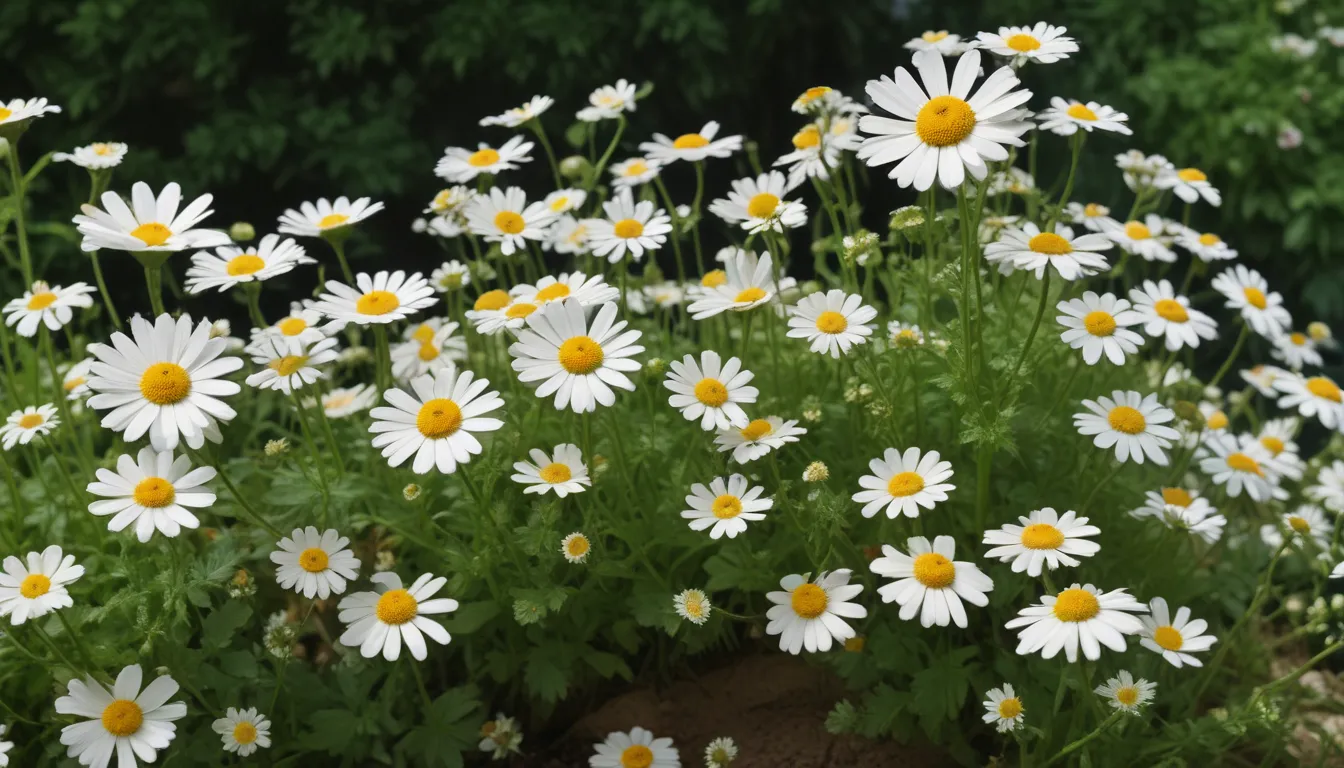How to Successfully Grow Feverfew: A Medicinal and Aesthetically Pleasing Addition to Your Garden

Feverfew (Tanacetum parthenium) is a fascinating herb that holds both medicinal and visual appeal. While many in the herbal medicine community vouch for its natural headache-relieving properties, it’s also hailed as an attractive landscape plant in gardening circles.
In this comprehensive guide, we’ll delve into the ins and outs of growing feverfew in your garden. Whether you’re a seasoned gardener or a beginner looking to add a touch of herbal charm to your yard, this article is designed to equip you with all the information you need to cultivate this intriguing herb successfully.
Let’s Get Started: What You’ll Learn
Before we dive into the specifics of growing feverfew, here’s an overview of what you can expect to learn in this guide:
- What Is Feverfew?
- Cultivation and History
- Propagation
- How to Grow
- Growing Tips
- Pruning and Maintenance
- Cultivars to Select
- Managing Pests and Disease
- Harvesting
- Preserving
- Quick Reference Growing Guide
Now, let’s embark on our journey to discover the wonders of feverfew!
What Is Feverfew?
Feverfew, also known as Tanacetum parthenium, boasts masses of charming, one-inch white, daisy-like flowers that sit atop spindly stems, accompanied by parsley-like leaves. Variably referred to as Matricaria parthenoides, Chrysanthemum parthenium, and other names, this herb typically grows between eight to 24 inches in height.
Unlike true chamomile, which it resembles, feverfew behaves as an annual in cooler zones, a perennial in some regions, and can even exhibit evergreen tendencies in warmer climates.
Cultivation and History
Originating in southeastern Europe, T. parthenium has now spread its roots across Europe, Australia, and North America, thriving in USDA Hardiness Zones 5 to 10. Renowned for its centuries-old use in herbal medicine, feverfew gained widespread popularity in the 18th century as a reliable treatment for headaches.
Today, feverfew is primarily valued for its headache-alleviating properties, as well as its potential to ease symptoms of arthritis and digestive issues. Research indicates that the plant’s extract may reduce the occurrence of migraine headaches, sparking ongoing scientific exploration into its therapeutic components.
Propagation
To propagate feverfew, you have multiple options:
From Seed
- Directly sow seeds after the last frost, ensuring a light covering of soil.
- For early planting, sow seeds indoors before the last frost.
- Water adequately for germination, keeping the soil consistently moist.
Transplants
- Plant seedlings in the garden post-last frost, spacing them a foot apart.
- Choose any garden soil, ensuring thorough watering after planting.
By Division
- Divide mature plants in spring or fall by separating the crown into sections.
- Replant divisions 18 inches apart, watering generously.
How to Grow
For optimal growth, plant feverfew in full sun or lightly shaded areas with well-drained sandy or loamy soil. Water the plants regularly to maintain soil moisture, especially if the conditions are not naturally humid.
Avoid fertilizing if the soil is already fertile, but consider a balanced fertilizer in poor soils. Notably, the plant exudes a citrus-like scent that repels bees, making it unsuitable for plants dependent on bee pollination.
Growing Tips
- Opt for full sun or partial shade.
- Choose well-drained sandy or loamy soil with a pH of 6.0 to 6.7.
- Water twice a week in dry spells to ensure consistent moisture.
- Apply a balanced fertilizer in spring if the soil is nutrient-poor.
Pruning and Maintenance
Since feverfew is prone to prolific self-seeding, vigilant monitoring and removal of volunteer seedlings is essential. Deadhead spent blossoms regularly to encourage continuous blooming, and trim back leggy stems to maintain plant health.
In colder regions where feverfew grows perennially, cut down foliage in fall and mulch generously to protect the roots during winters.
Cultivars to Select
Consider choosing T. parthenium, the species plant, available at local nurseries or online. Varieties like ‘Double White’ and ‘White Bonnet’ offer unique characteristics, from double flowers to frilly white petals, adding diversity to your garden landscape.
Managing Pests and Disease
While feverfew is relatively disease-resistant, watch out for aphids, slugs, and potential aster yellows disease. Simple tactics like spraying with water or using homemade insecticidal soap can help manage these issues effectively. Ensure proper sunlight exposure to prevent powdery mildew.
Harvesting
Harvest feverfew leaves and flowers throughout the season, with peak essential oil content at the flowering onset. Collect flowers in mid-morning post-dew evaporation and limit leaf harvesting to one-third of the plant at a time. Additionally, save seeds from mature plants for future cultivation.
Preserving
Fresh feverfew flowers are ideal for tea, while dried leaves and flowers can be stored for prolonged use. If preserving herbs, consider drying them using a dehydrator or traditional hanging method.
You can create a tincture with feverfew leaves and flowers by infusing them in alcohol for headache relief. It’s crucial to consult a healthcare professional before using herbal remedies for medical purposes.
Quick Reference Growing Guide
For your convenience, here’s a summarized guide to growing feverfew:
- Plant Type: Short-lived perennial herb
- Native to: Southeastern Europe
- Hardiness (USDA Zone): 5-10
- Exposure: Full sun
- Height: 8-24 inches
- Spread: 8-24 inches
- Water Needs: Moderate
- Soil Type: Sand or loam
- Soil pH: 6.0-7.0
- Time to Maturity: 80-90 days
- Spacing: 12 inches
- Maintenance: Low
- Companion Planting: Mint, vegetables
- Common Pests and Disease: Aphids, slugs; aster yellows, powdery mildew
Embrace the Joys of Growing Feverfew
With its potent medicinal properties and aesthetic allure, feverfew promises to be a delightful addition to your garden. By following the guidelines outlined in this article, you can successfully cultivate this versatile herb and enjoy the plethora of benefits it offers.
Have you had any experience growing feverfew? Share your insights and experiences in the comments section below. Let’s continue to explore the wonders of herbal gardening together!
As you embark on your feverfew-growing journey, consider exploring other beautiful and medicinal flowering herbs like Bee Balm and Pot Marigold. These easy-to-grow plants can further enrich your garden landscape and enhance your herbal repertoire.
Remember, always consult with healthcare professionals before incorporating herbal remedies into your wellness routine. Your well-being is of utmost importance, and informed decisions are key to a healthier, more vibrant life.





